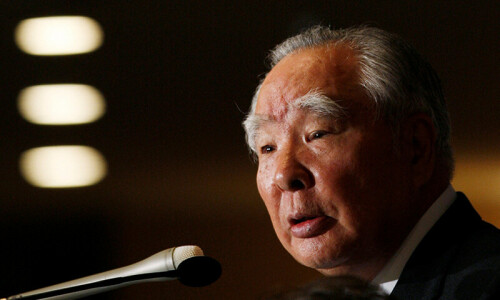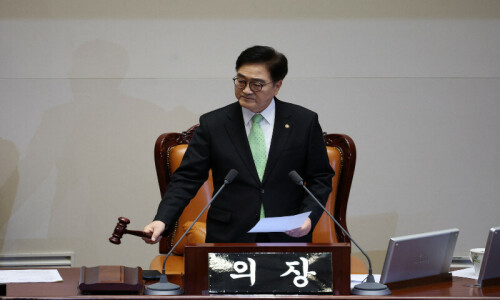KABUL In a major speech in Washington, US President George Bush called Afghanistan a young democracy where children now go to school and Afghans are hopeful. But he didn`t mention a sharp rise in violence that has killed 147 students and teachers and closed 590 schools in the last year.
Bush`s rosy outlook for a country that once hosted Al Qaeda chief Osama bin Laden didn`t contain any falsehoods. New roads and hospitals are being built, just as he told the nation on Monday night in his State of the Union address.
Boys and girls are going to school in record numbers, too. Some 5.8 million students, including 2 million girls, are now in class, compared with less than a million under the Taliban.
But some here might say Bush glossed over the bad news. Last year saw a record level of violence, and military leaders and analysts expect the suicide bombings, clashes and kidnappings to increase this year.
“The security is going from bad to worse, especially in the south and the east,” said Abdul Kaiyoom, 47, who works for Afghanistan`s Education Ministry. “International forces have very modern equipment, but the Taliban have a heavy influence in the outlying areas, and they are taking territory from the government.”
Bush said the deployment of an additional 3,200 Marines to Afghanistan — a decision made just this month — would help continue the country`s successes. But in reality, those Marines were tasked to Afghanistan only after US officials couldn`t persuade other Nato countries to send more soldiers to bolster the 28,000 US forces already there.
“Thanks to the courage of these military and civilian personnel, a nation that was once a safe haven for Al Qaeda is now a young democracy where boys and girls are going to school, new roads and hospitals are being built and people are looking to the future with new hope,” Bush said.
USAID, the government`s aid arm, has built or refurbished 680 schools in Afghanistan since 2001. Still, Education Minister Mohammad Hanif said last week that schools suffer from a shortage of qualified teachers — and of schools themselves.
Out of the country`s 9,400 schools, only 40 per cent are actual buildings. Sixty per cent of classes are held in tents or the open air.
But there`s an even more worrying trend The number of students and teachers killed in Taliban attacks tripled in the past year, to 147, Hanif said, while the number of students not attending classes because of security has hit 300,000 since March 2007, compared with 200,000 in the previous 12 months. The number of schools closed has risen from 350 to 590.
The bad news doesn`t end there. The Kabul-based security company that surveys conditions for international aid organisations in Afghanistan said in a report this month that 2007 will be seen as the year the Taliban seriously rejoined the fight.
“With the Taliban evidently resurgent, it has also become obvious that their easy departure in 2001 was more of a strategic retreat than an actual military defeat,” Nic Lee, the director of the Afghanistan NGO Safety Office, wrote.
“In simple terms, the consensus amongst informed individuals at the end of 2007 seems to be that Afghanistan is at the beginning of a war, not the end of one.”
More than 6,500 people — mostly militants — died in insurgent violence last year, the highest since the 2001 US led invasion, according to a count based on official figures. Some 140 insurgent suicide attacks took place — a record number.
“All the suicide attacks happen against (international forces), but the attacks actually kill Afghan civilians,” said Kabul taxi driver Saboor Amiri, 40. “If they can`t provide security for themselves, how can they provide security for the civilians? ... Yes, we appreciate that they kicked out the Taliban, but now it`s time for these forces to leave.”
That won`t happen. There is growing recognition in Washington that the US risks further setbacks, if not deepening conflict or even defeat, in Afghanistan, and analysts say the Bush administration is taking the country and the growing unrest in neighbouring Pakistan more seriously than in the past.
The number of US troops in Afghanistan has grown over the past two years from about 20,000 to the current force of 28,000, the highest of the war. The total will pass 31,000 this spring when the Marines arrive.
Some Afghans see that as a good thing, among them Mohammad Nieem, a 50-year-old Kabul shopkeeper.
“All the students going to school is a result of the efforts of the international community. We had elections. That was the first time in my life I saw an election,” he said.
“Yes, we have security problems in some parts of the country ... (but) I appreciate that America is sending extra troops. This is something Afghanistan needs right now.”—AP












































Dear visitor, the comments section is undergoing an overhaul and will return soon.